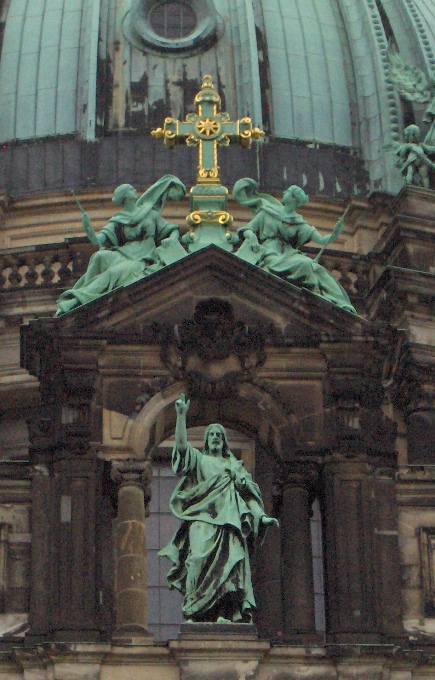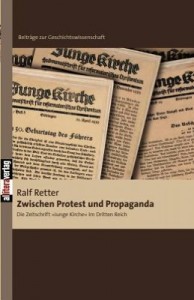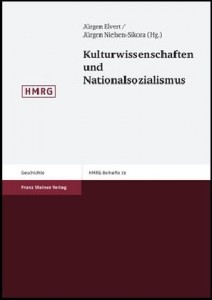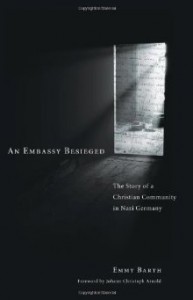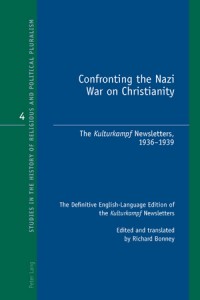ACCH Quarterly Vol. 16, No. 4, December 2010
Review of Dietrich Bonhoeffer, Berlin: 1932 – 1933: Dietrich Bonhoeffer Works, Volume 12, ed. Larry L. Rasmussen, trans. Isabel Best, David Higgins, and Douglas W. Stott (Minneapolis: Fortress Press, 2009), 680 pp. ISBN 978-0-8006-8312-2.
By John S. Conway, University of British Columbia
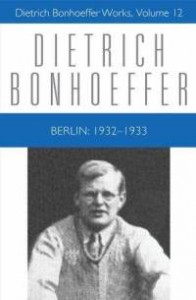 The twelve months from November 1932 to October 1933 covered in this, the twelfth volume of Bonhoeffer’s collected writings, were to be of crucial significance, not just for the career of this young theologian, but for his nation as well. The political and social turmoil, which had resulted in violent clashes between rival gangs of Communists and Nazis in many of Germany’s major cities, culminated in the seizure of power by the National Socialists, led by Adolf Hitler, on January 30, 1933. It was the beginning of what Bonhoeffer, within a few days, was to describe as “a terrible barbarization of our culture”, the onset of what he later called “the masquerade of evil”. This insight was eventually to lead to Bonhoeffer’s involvement in the conspiracy to overthrow Hitler’s dictatorship and to his execution for high treason in April 1945. This period is therefore notable as marking the beginnings of his opposition to the Nazis’ imposition of totalitarian measures that were to have such fateful consequences.
The twelve months from November 1932 to October 1933 covered in this, the twelfth volume of Bonhoeffer’s collected writings, were to be of crucial significance, not just for the career of this young theologian, but for his nation as well. The political and social turmoil, which had resulted in violent clashes between rival gangs of Communists and Nazis in many of Germany’s major cities, culminated in the seizure of power by the National Socialists, led by Adolf Hitler, on January 30, 1933. It was the beginning of what Bonhoeffer, within a few days, was to describe as “a terrible barbarization of our culture”, the onset of what he later called “the masquerade of evil”. This insight was eventually to lead to Bonhoeffer’s involvement in the conspiracy to overthrow Hitler’s dictatorship and to his execution for high treason in April 1945. This period is therefore notable as marking the beginnings of his opposition to the Nazis’ imposition of totalitarian measures that were to have such fateful consequences.
This volume brings together the surviving letters, articles, papers and sermons from this short turning point in Bonhoeffer’s life. As before, the translation of the German original is excellent, and the editorial footnotes very helpful. In addition we are given a chronology of these months, a very full index of names, giving the positions held by those mentioned, as well as an exhaustive subject index. This volume’s value is enhanced by having not only Larry Rasmussen’s introduction, but also the translation of the afterword provided by the German editors. In addition, certain materials have been added since the original German edition was published. On the other hand, in contrast to the preceding volume 10, which covered Bonhoeffer’s stay abroad, this volume is less revealing. During these months in Berlin, Bonhoeffer was in close contact with his friends and family, so clearly most of the significant discussions and debates about his ideas and conduct were undertaken verbally and were not committed to paper or have not survived. Nevertheless, the remarkable number of his extant communications provides us with major clues, which of course were more fully explored in Eberhard Bethge’s full biography, first published in 1966.
If this volume contains only small items not hitherto known, it is still an impressive piece of scholarship. The centrepiece of this volume is the controversy over the future of the German Evangelical Church. This dispute greatly escalated after the Nazis came to power and particularly after the passage in April 1933 of the Law ordering the removal of people of Jewish origins from official positions. On the one side, the vociferous faction known as the German Christians sought to align the church as closely as possible with the new political regime. They supported Hitler’s goals for a renewed powerful Germany, and saw in him a leader who would restore the nation’s strength by boldly and forcefully attacking those they considered to be the national enemies, particularly Communists and Jews. By such a stance, they believed, the church would regain its popularity and demonstrate its loyalty to the state. On the other side were those whose conservative rootedness deplored such innovative departures from traditional Lutheran doctrines. From the beginning, as these documents make clear, Bonhoeffer championed this adherence to orthodoxy, and became, at the age of 27, one of the most vocal critics of the German Christians and their deplorable and false doctrines. He was thus caught up, as is clear from his correspondence and papers, in the turmoil and fluidity that assailed the churches. What is remarkable is the sense of foreboding reflected in his words from the early months of Nazi rule. He refused to share the widespread enthusiasm that swept through many sections of German conservative society, including the Evangelical Church. As early as February 1933, he was expressing his view that authoritarian leadership and ecstatic patriotism were dangerously misleading traits. Most particularly he now began to take issue with the German Christians’ attempts to introduce the state’s anti-Jewish regulations into the church by banning anyone of Jewish origin from holding offices in the church, and even by calling for their expulsion altogether. This led to his being invited in June 1933 to be one of a team drawing up a firm statement of orthodox belief, known from its place of origin as the Bethel Confession. Unfortunately the church leaders delayed its publication, and asked for revisions, so that eventually Bonhoeffer felt it had been watered down and dissociated himself. It was one of the factors that led him to decide to leave Germany and take over pastoring two German parishes in London in October 1933, which is where this volume ends.
We are not yet provided with a full account of the struggles that Bonhoeffer must have gone through to reach this decision. But it clearly meant leaving the two jobs he held, first the lectureship in systematic theology at Berlin’s university, and second a chaplaincy at the Technical College. The latter appointment was clearly a mistake since few students wanted counselling, and none appeared at his office hours. By contrast his students at the university were enthralled, even though Bonhoeffer lectured at 8 in the morning on Saturdays and Wednesdays! Fortunately several students preserved their notes from which a partial text has been reconstituted, which is included in this volume. But it is notable that Bonhoeffer carefully avoided any reference to current political events. Nor were the students consulted about his sudden career change.
No less striking is the material on Bonhoeffer’s extra-curricular engagements. In these months he diligently coached a confirmation class for young lads in a north Berlin slum district, and even moved there so that they could call on him in the evenings. No less significant was his involvement with the wider European ecumenical movement, particularly through the World Alliance for Promoting International Friendship through the Churches. Bonhoeffer had been appointed the World Alliance’s Youth Secretary for central Europe shortly after his return from America in 1931, and was responsible for organizing youth conferences designed to overcome national barriers and hatreds. But much to the regret of his mentors in this work, Superintendent Diestel and Professor Friedrich Siegmund-Schultze, Bonhoeffer was too preoccupied with his other responsibilities to give much time to the World Alliance. His most significant action was to travel to a conference in Sofia,Bulgaria, in September 1933, where he urged the World Alliance leaders to adopt a resolution deploring the German state’s measures against the Jews and protesting against the German church’s readiness to adopt the so-called “Aryan paragraph” discriminating against anyone of Jewish origin. At this point, Bonhoeffer felt that his outspokenness on this subject might well land him in a concentration camp if he returned to Germany. His decision to accept his next ministerial assignment in England was therefore a judicious move.
But the World Alliance continued to mean much to Bonhoeffer. This was the period when he was wholeheartedly persuaded of the need for world peace. In this cause he was a pupil of Siegmund-Schultze, the leading pacifist of the German Evangelical Church. But Siegmund-Schultze was to be forcibly expelled from Germany by the Gestapo in June 1933, which must have been a great shock and bitter blow to Bonhoeffer and his friends. It was not until the following year, at the World Alliance’s conference in Denmark, that Bonhoeffer’s most significant contribution to the issue of world peace was expressed. This volume, however, only hints at his developing ideas.
Karl Barth, whom Bonhoeffer greatly admired, was opposed to his leaving Germany, and the letters between the two reveal Barth’s strong regret and Bonhoeffer’s apologetic tone. But certainly we can be sure that Bonhoeffer’s steadfast denunciations of the false doctrines of the German Christians, as expressed in the Bethel Confession, were to pay a role in May 1934, when Barth composed the equally stringent rejection of false doctrines in the Barmen Declaration.
Equally notable is the text of Bonhoeffer’s often misunderstood statement on “The Church and the Jewish Question” of June 1933. This undoubtedly reflects the Lutheran theological tradition about these “outcast” people, and calls for their eventual conversion. But it also challenges the church to oppose the harsh measures taken by the state, and if necessary to bring the apparatus of the unjust and illegitimate state to a halt. He then goes on to proclaim the necessity of not allowing the state to prescribe who can be a member of the church. In reality, the church consists of Germans and Jews standing together under God’s Word. Racial characteristics have nothing to do with membership in the church. Unfortunately Bonhoeffer left this vital topic unfinished and rarely returned to it in subsequent years.
Our thanks are due to the editors and translators for their excellent work in maintaining the standard of previous volumes. It is to be hoped that the whole series will soon be completed for English-speaking readers. For as Vicki Barnett, the General Editor, rightly notes: “These volumes are a significant contribution to twentieth century theological literature, church history and the history of the Nazi era”. They afford us a detailed view of “Bonhoeffer’s historical context and its great challenges for the churches and for all people of conscience.”
